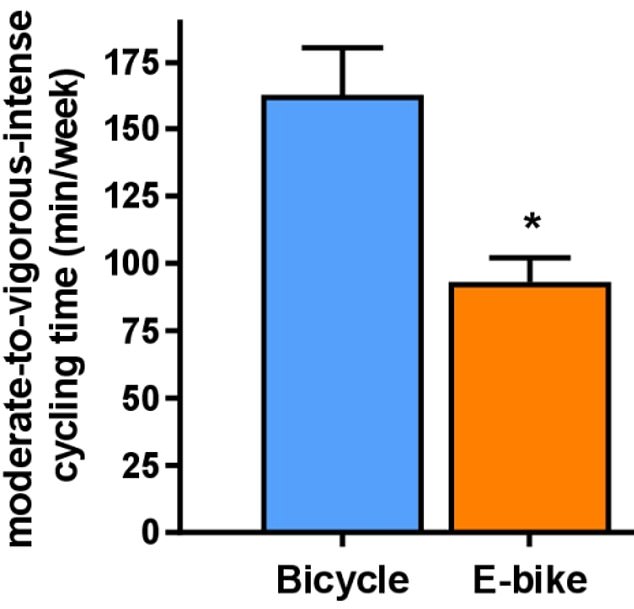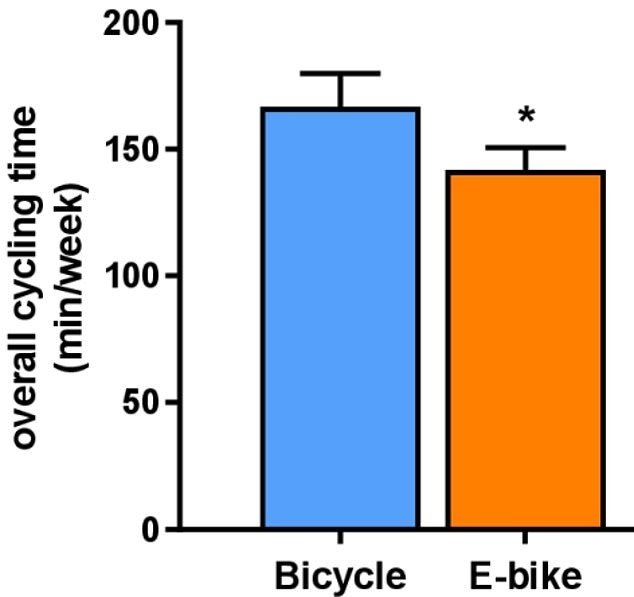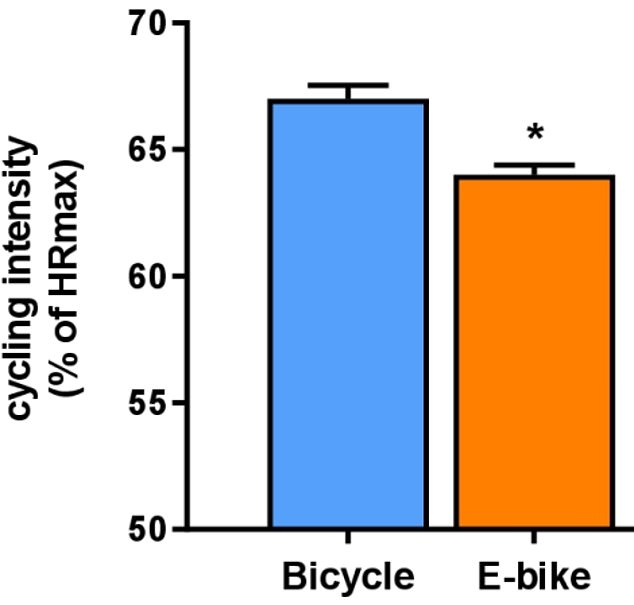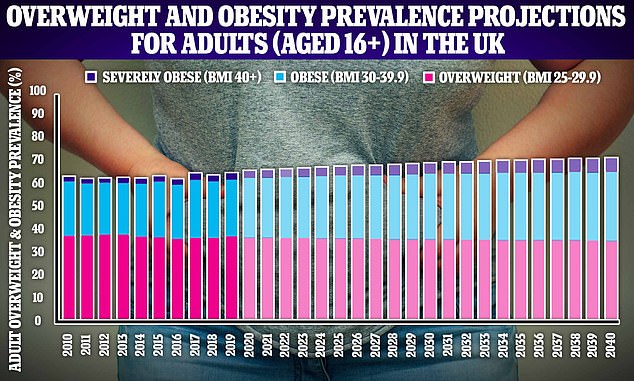Pedal power is better than riding an electric bike when it comes to reaching your health goals, research suggests.
Users of electric bikes, equipped with built-in motors, are less likely to get the recommended amount of exercise compared to those using traditional models.
Scientists say this is because electric cyclists make fewer and less physically demanding trips than conventional cyclists.
But they added that electric bikes, which can cost more than £1,000 ($1,105), can still serve a purpose.
German experts said the devices can encourage people who might not otherwise bother to ride a bike, such as the elderly or obese, to climb onto the saddle.
As a result, it could have health benefits for them.

A German study found that people who rely on pedal power are 50% more likely to reach recommended exercise levels than cyclists using trendy electric bikes.


This graph shows how conventional cyclists spend more time pedaling at a moderate to vigorous level than electric cyclists.


Pedal cyclists also had a longer average total time on the bike than those who supplemented their cycling with an electric motor.
Electric bikes have an electric motor that activates when the rider pedals, making them less physically demanding to use. It also makes it easier to climb hills.
Researchers at the Hanover School of Medicine compared the fitness and riding habits of 1,250 electric cyclists and 629 conventional cyclists.
E-cyclists tended to be older, weigh more and have more health problems, which may slightly skew the findings.
The experts then analyzed whether each group of participants managed to reach the World Health Organization (WHO) exercise goal of 150 minutes per week of moderate to vigorous physical activity.
The participants were equipped with activity trackers that evaluated time, distance and heart rate while cycling for four consecutive weeks.
The results, published in the BMJ Open Sport and Exercise Medicineshowed that only 22 percent of electric cyclists reached the WHO goal.
For comparison, the rate was 35 percent among conventional cyclists.
This equates to electric cyclists being about half as likely to reach the finish compared to their pedaling counterparts.
In terms of total averages, electric cyclists were found to do only about 90 minutes of moderate to vigorous cycling per week, about 70 minutes less than conventional cyclists.
People on conventional bikes also tended to take more bike trips.
The average heart rates of the conventional cyclists were also higher, suggesting a higher level of exertion: 119 BPM vs. 111 BPM.
In a separate part of the study, the researchers also found that electric cyclists were 63 percent more likely to have a traffic accident over 12 months than conventional cyclists.
Overall, 109 accidents and 157 near misses were recorded.
Electric bikes that are capable of faster speeds could be one reason for this trend, the authors suggested.
Concluding their study, the researchers said the findings had implications for public health initiatives that help people buy electric bikes.
“The expected health effects could be greater for bicycle users, which is an important factor for lawmakers in the discussion of subsidizing electric bicycles at the state level,” they said.
But they added that the electric bike still had benefits, particularly for those who might otherwise give up cycling altogether.
“The growing appeal and popularity of electric bicycles could facilitate recreational cycling and active commuting, especially for those who are limited by age or disease-associated constrictions and who might not otherwise choose to use a bicycle,” they said. .


Heart rate while cycling was also higher in the group of cyclists, indicating that these cyclists were exerting more effort than their electric bike counterparts.


More than 42 million adults in the UK will be overweight or obese by 2040, according to projections from Cancer Research UK
Electric bikes are gaining popularity in the EU, with 3.4 million sold across the bloc in 2019, compared to just 98,000 in 2006.
Industry analysis by Mintel estimated that 170,000 electric bikes were sold in the UK in 2020,
NPD estimated the number of electric bikes sold in the US to be 368,000 in 2021.
The German findings follow other research earlier this year that found only one in 20 adults in England gets the recommended amount of exercise.
Experts at the University of Essex came to that conclusion after studying the exercise habits of a quarter of a million people in England.
Like the WHO, the National Health Service recommends that people get two and a half hours of moderate-intensity physical activity a week, such as brisk walking, biking, and pushing a lawnmower.
Adults should also do muscle-strengthening activities, such as carrying heavy shopping bags, lifting weights, and gardening, at least two days a week.
But the Essex study found that only a ‘surprisingly small’ five per cent of people in England meet these minimum thresholds.
Regular exercise combined with a balanced diet is seen as the best way to tackle obesity, one of Britain’s biggest health problems.
The most recent data shows that 64 percent of adults are overweight, and more of us are projected to gain weight in the future.
Obesity is not only increasing British waistlines but also healthcare costs, with the NHS spending an estimated £6.1bn on treating weight-related illnesses such as diabetes, heart disease and some cancers between 2014 and 2015.
In the US, an estimated 73.6% of adults are overweight or obese.
.
